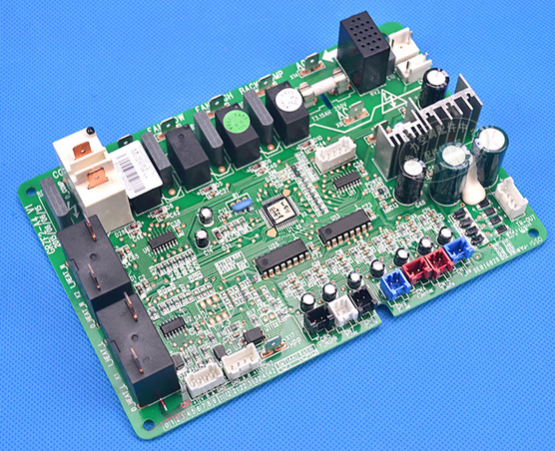According to the number of layers, circuit boards are divided into three major categories: single-sided, double-sided, and multi-layer circuit boards. The Shanghai circuit board welding manufacturer pointed out that the first is the single-sided board. On the most basic PCB, the parts are concentrated on one side, and the wires are concentrated on the other side. Because the wires only appear on one side, this kind of PCB is called a single-sided circuit board. Single-sided panels are usually simple to manufacture and low in cost, but the disadvantage is that they cannot be applied to products that are too complex. Double-sided boards are an extension of single-sided boards. When single-layer wiring cannot meet the needs of electronic products, double-sided boards should be used. There are copper-clad wires on both sides, and the lines between the two layers can be connected through vias to form the required network connections.
Multi-layer board refers to a printed board with more than three conductive pattern layers and insulating material between them laminated at intervals, and the conductive patterns between them are interconnected as required. Multilayer circuit boards are the product of the development of electronic information technology in the direction of high speed, multi-function, large capacity, small volume, thinner and lighter weight.

Circuit boards are divided into flexible boards (FPC), rigid boards (PCB), and rigid-flex boards (FPCB) according to their characteristics.
The time required to test the circuit board is described as follows
When the tester tests the circuit board, the time required for each board is different, because the points and network of each board are different. The test time is mainly calculated based on these two items. Completing a test file will generate a Report file, which contains the theoretical time of the board test (as shown in blue, the model is SN0800020A0).
The exact time for testing each board (usually based on the hard board) is when testing an OK block, and the testing time of the testing machine shall prevail.
Generally speaking, the actual time is basically the same as the theoretical time. However, the FX3000 series flying probe tester has been improved in many aspects, the accuracy is improved, and the test speed can be increased by about 20% (we verified through actual operations). The reasons for the speed of the FX3000 series flying probe tester are as follows:
1. Speed adjustment: Usually the XY axis drive speed is adjusted to 70,000, and the fastest does not exceed 80,000; the Z axis drive speed is adjusted to 7000, and the fastest does not exceed 8,000, otherwise it will affect the performance of the machine and cause step loss.
2. Shorten the waiting time after injection and back-injection when testing the board.
3. Reduce the lifting height of the Z axis: the range of the lifting height of the Z axis is between 120-360, usually set to between 180-280, the larger the data of the Z axis, the slower the speed; otherwise, the faster, but the Z axis If the promotion data is too small, there will be scratches and other phenomena.
4. When there is a problem in the PCB test process, the test time will be relatively increased. For example, if an open circuit occurs in the test, when the retest is OK, the tester will automatically recover the short circuit between the open circuit and the adjacent network, and the test time will be relatively increased; when an uncertain short circuit occurs, the test time will increase. (There are many problems in the test, which mainly depends on whether the quality of the PCB produced by the PCB manufacturer is more open, short-circuited, and whether the surface treatment conductivity is good, and whether the setting of the operator's reference point is reasonable, which requires the operator's test experience).
5. The characteristics of the PCB itself will also affect the test time.
For example: the test points of some boards are too close to the edge of the board and some flexible boards need to be fastened and supported by a specific support frame. If the fixing is not good, the board shakes back and forth, then the Z-axis lift must be added during the test. Altitude, the test time increases.